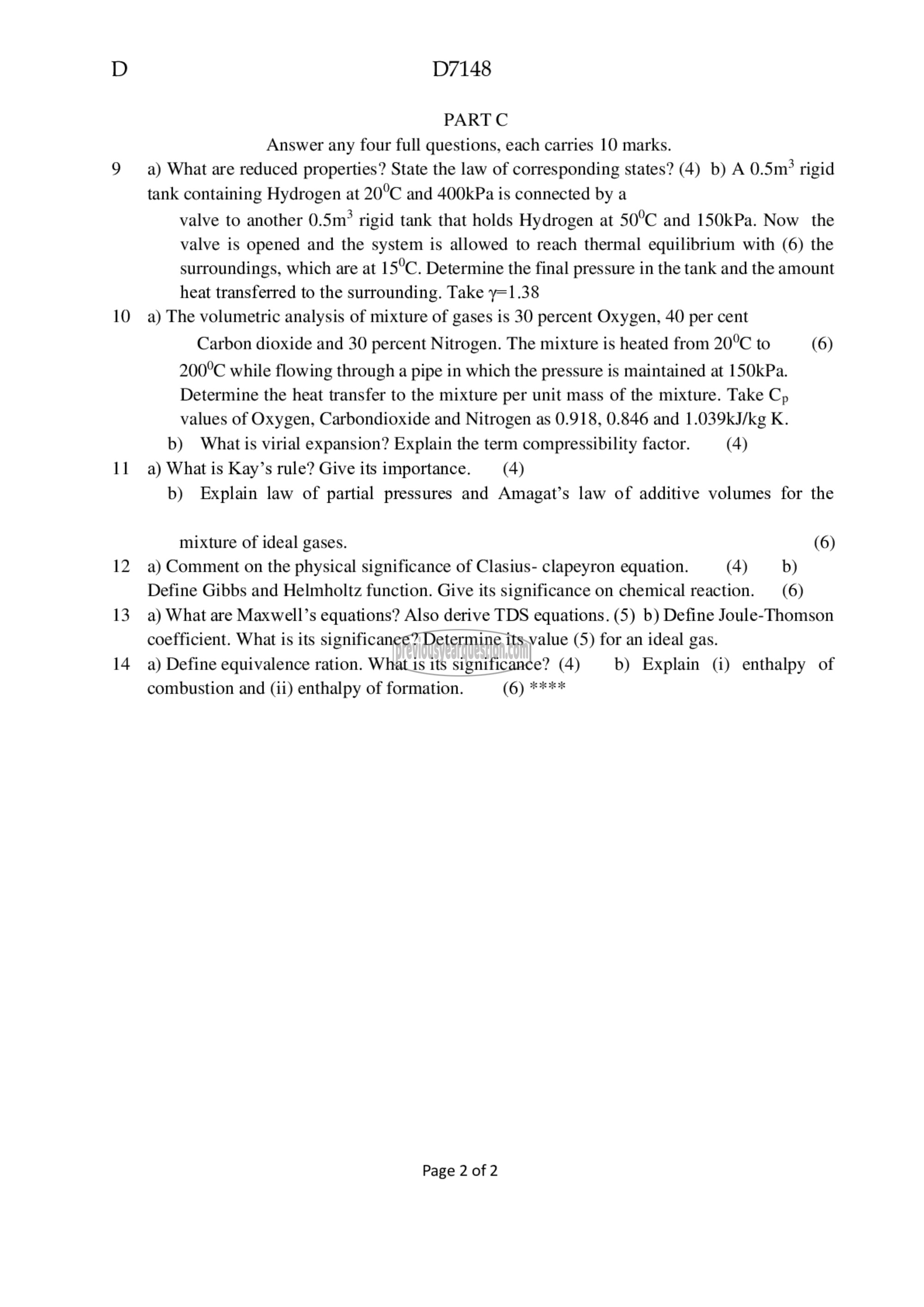APJ ABDUL KALAM TECHNOLOGICAL UNIVERSITY Previous Years Question Paper & Answer
Semester : SEMESTER 3
Subject : Thermodynamics
Year : 2017
Term : DECEMBER
Branch : MECHANICAL ENGINEERING
Scheme : 2015 Full Time
Course Code : ME 205
Page:2
10
11
12
13
14
D7148
PART C
Answer any four full questions, each carries 10 marks.
a) What are reduced properties? State the law of corresponding states? (4) b) A 0.5m? rigid
tank containing Hydrogen at 20°C and 400kPa is connected by a
valve to another 0.5m? rigid tank that holds Hydrogen at 50°C and 150kPa. Now the
valve is opened and the system is allowed to reach thermal equilibrium with (6) the
surroundings, which are at 15°C. Determine the final pressure in the tank and the amount
heat transferred to the surrounding. Take y=1.38
a) The volumetric analysis of mixture of gases is 30 percent Oxygen, 40 per cent
Carbon dioxide and 30 percent Nitrogen. The mixture is heated from 20°C to (6)
200°C while flowing through a pipe in which the pressure is maintained at 150kPa.
Determine the heat transfer to the mixture per unit mass of the mixture. Take Cp
values of Oxygen, Carbondioxide and Nitrogen as 0.918, 0.846 and 1.039kJ/kg K.
b) What is virial expansion? Explain the term compressibility factor. (4)
a) What is Kay’s rule? Give its importance. (4)
b) Explain law of partial pressures and Amagat’s law of additive volumes for the
mixture of ideal gases. (6)
a) Comment on the physical significance of Clasius- clapeyron equation. (4) b)
Define Gibbs and Helmholtz function. Give its significance on chemical reaction. (6)
a) What are Maxwell’s equations? Also derive TDS equations. (5) b) Define Joule-Thomson
coefficient. What is its significance? Determine its value (5) for an ideal gas.
a) Define equivalence ration. What is its significance? (4) b) Explain (i) enthalpy of
combustion and (ii) enthalpy of formation. (6) ****
Page 2 of 2
